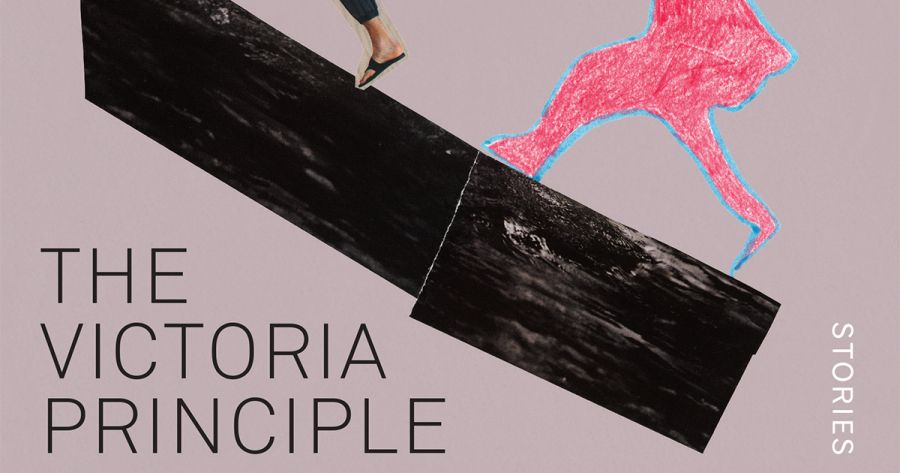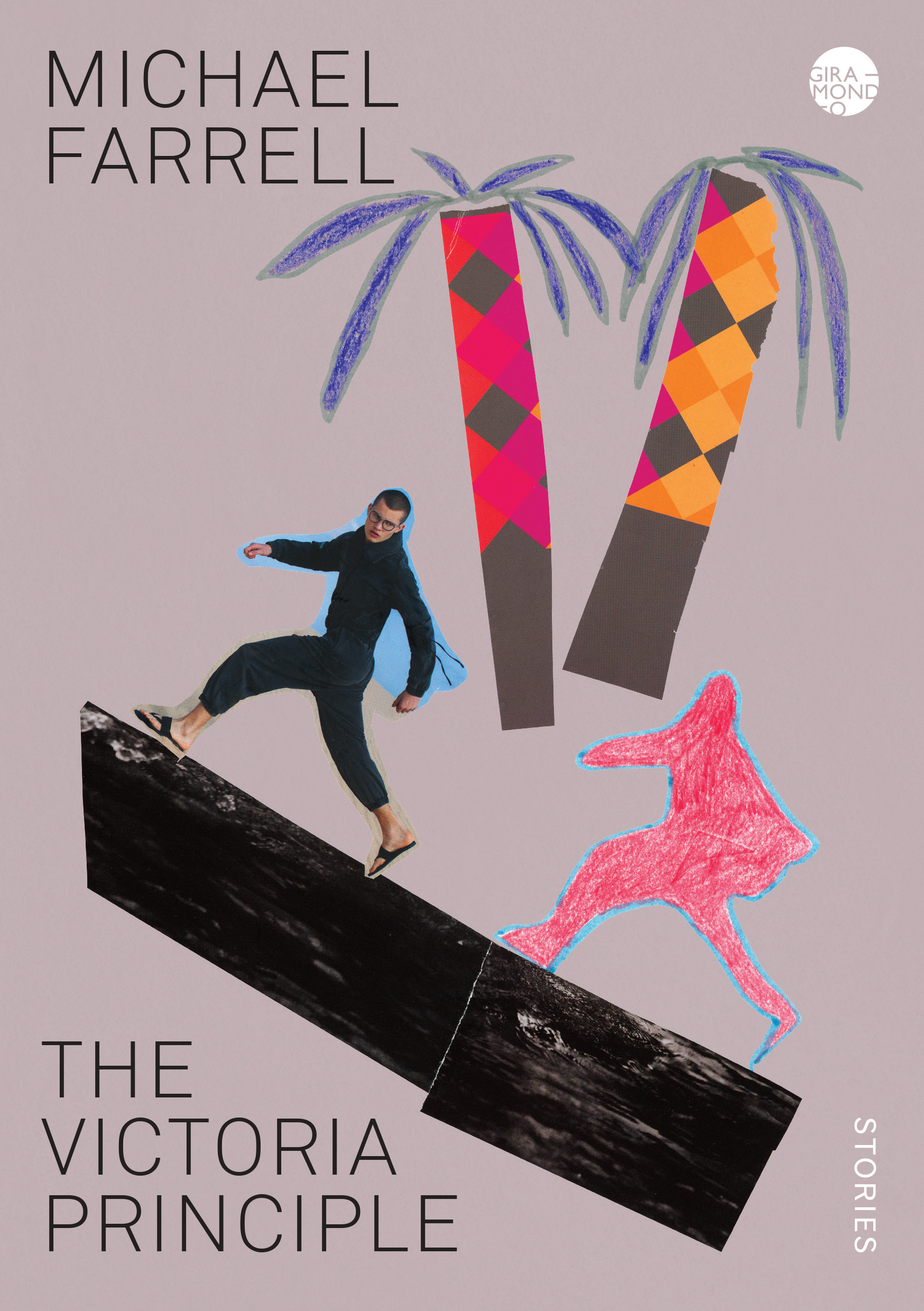
- Free Article: No
- Contents Category: Fiction
- Review Article: Yes
- Article Title: Beyond the I
- Article Subtitle: Michael Farrell’s debut collection
- Online Only: No
- Custom Highlight Text:
In one of the later short stories in Michael Farrell’s The Victoria Principle, a man anonymised as ‘Bill’ is prompted by an anecdote recounted in a university swimming pool change room to reflect on possible excuses not to arm-wrestle. This does not seem to have been a topic of interest for Bill previously. Indeed, the narrator concedes that for Bill’s ‘milieus (overlapping academic and creative)’ arm-wrestling was given little thought, if any.
- Book 1 Title: The Victoria Principle
- Book 1 Biblio: Giramondo, $29.95 pb, 178 pp
- Book 1 Cover Small (400 x 600):

- Book 1 Cover (800 x 1200):

- Book 1 Readings Link: https://www.readings.com.au/product/9781923106307/the-victoria-principle--michael-farrell--2025--9781923106307#rac:jokjjzr6ly9m
On a few fronts, this story, fittingly titled ‘Excuses Not to Arm-Wrestle’, is representative of many of Farrell’s twenty collected stories. Free from conventional characterisation and plotting, the stories are driven by a narrator or focaliser preoccupied with their own internal dialogue. In their emphasis on humour and formal play, the stories share elements of short fiction experimentation by John Barth, especially when Farrell elects for more overt metafictional interventions or emphasises a proliferation of ontological levels: dreams, textually constructed spaces, fictions within fictions.
Indeed, as the collection progresses, Farrell seems almost impatient to disturb any illusion of mimetic representation. The name of a character just introduced might immediately be exposed as a fiction, as in ‘Real Estate Agents Wish Government Would Do More’. A narrator, usurping the position of (implied) author, might turn their attention to the very story being narrated, at times anticipating critique, as in ‘Thinking About Ornithophobia’, ‘Back at the Flat’, ‘The Mona Lisa and Her Brothers’, and ‘Writing’. As the narrator of the latter observes: ‘This story, about writing stories, is just the sort of thing people of letters complained about in interviews, or in praising reviews of books which don’t do that: stories about real people, whose lives got worse as the stories went on.’ In the absence of narrative movement of this kind, Farrell relies on intricate, often circular, formal structures to achieve a sense of closure.
In the opening story, ‘Thinking About Ornithophobia’, a writer reflects on the proposed theme (from which the story takes its title) of a journal issue he has been asked to edit. This is the first of three stories that Farrell has described as ‘experiments in autofiction’. Each to varying degrees contrast rural childhood imagery with contemporary urban environments and contain the collection’s most lasting senses of place. In ‘The “Smells Like Teen Spirit” Egg’, a first-person narrator debates the practicalities of exhibiting a conceptual artwork – an egg boiled for the exact length of Nirvana’s ‘Smells Like Teen Spirit’ – which he is unlikely to ever realise. Should the narrator boil the egg to the song’s original length, for example, or utilise the shorter single edit to achieve the desired ‘level of runniness’?
In ‘Everybody’s Talking About the New “Meryl Streep” Novel’, a narrator succumbs to the magnetism of the latest literary fad and, as with an earlier story, ‘Impatience is Not a Virtue’, famous names become decontextualised to comic effect. In ‘Sadgirl Rereads America’, a self-aware ‘quasi-manga style’ character grapples with the structure of her PhD thesis and, ultimately, the nature of her existence as a textually constructed being. Sadgirl’s thesis is on the poetry of Wallace Stevens and Susan Howe because, ‘like her creator’, the narrator reveals, Sadgirl is ‘more interested in American modernist and postmodernist poetry than in manga’. In this story, the blurred focalisation between Sadgirl and the character referred to as the ‘author’ or ‘creator’ (as distinct from the story’s third-person narrator) is Farrell’s most effective representation of the instability of diegetic levels – and, by extension, the instability of the fictions inherent to our ‘reality’ – a notion both problematised and parodied throughout the collection.
For a small minority of these stories, the forcefulness through which the text imposes its own structure and interpretive keys can leave the stories seeming a little inward and closed. Yet, on the whole, the collection counteracts this impression. By affording an extended treatment of subject matter of seemingly narrow narrative scope, Farrell’s structures are intentionally warped and disproportionate, reminiscent of the ‘irregularity’ and ‘sense of imbalance’ that Gerald Murnane, in his Last Letter to a Reader (2021), has observed in his own self-reflexive short fiction. Indeed, this paradoxical quality is mirrored by Farrell’s narrators and focalisers who, despite being bogged down in individual mundanities, still manage, through momentary glimpses, to gesture beyond their own circumstances.
As the narrator of ‘Writing’ reflects, ‘it was perhaps my desire, the desire that writing represented … to go beyond the I of the author, and beyond the pedestrian … into something more extravagant’. When a narrator observes the native birds that assert their presence on the stories’ horizons, recounts dreams of pro-Palestine protesters, or makes oblique yet persistent reference to attendances at clinics and psych hospitals, there is a sense that Farrell has tapped into a deep affective reservoir lapping just below the surface of his stories.
While these gestures often implicitly register loneliness and dislocation, they also speak to an abiding sense of curiosity, a longing for more meaningful connections, and the unique power of art to probe and explore.


Comments powered by CComment